











Henry Arthur Herbert (1815-1866) of Muckross married Mary Balfour (1817-1893), a talented water-colourist, in 1837. Elected to Parliament in 1847, Henry was appointed Lord Lieutenant of Kerry in 1853 and Colonel of the Kerry Militia in 1854. Under Lord Palmerston, the Liberal Prime Minister, Henry was appointed Chief Secretary for Ireland in June 1857. However, he only held this office for a short time. Henry was buried in Killegy graveyard, overlooking the Muckross Estate.
Return To Timeline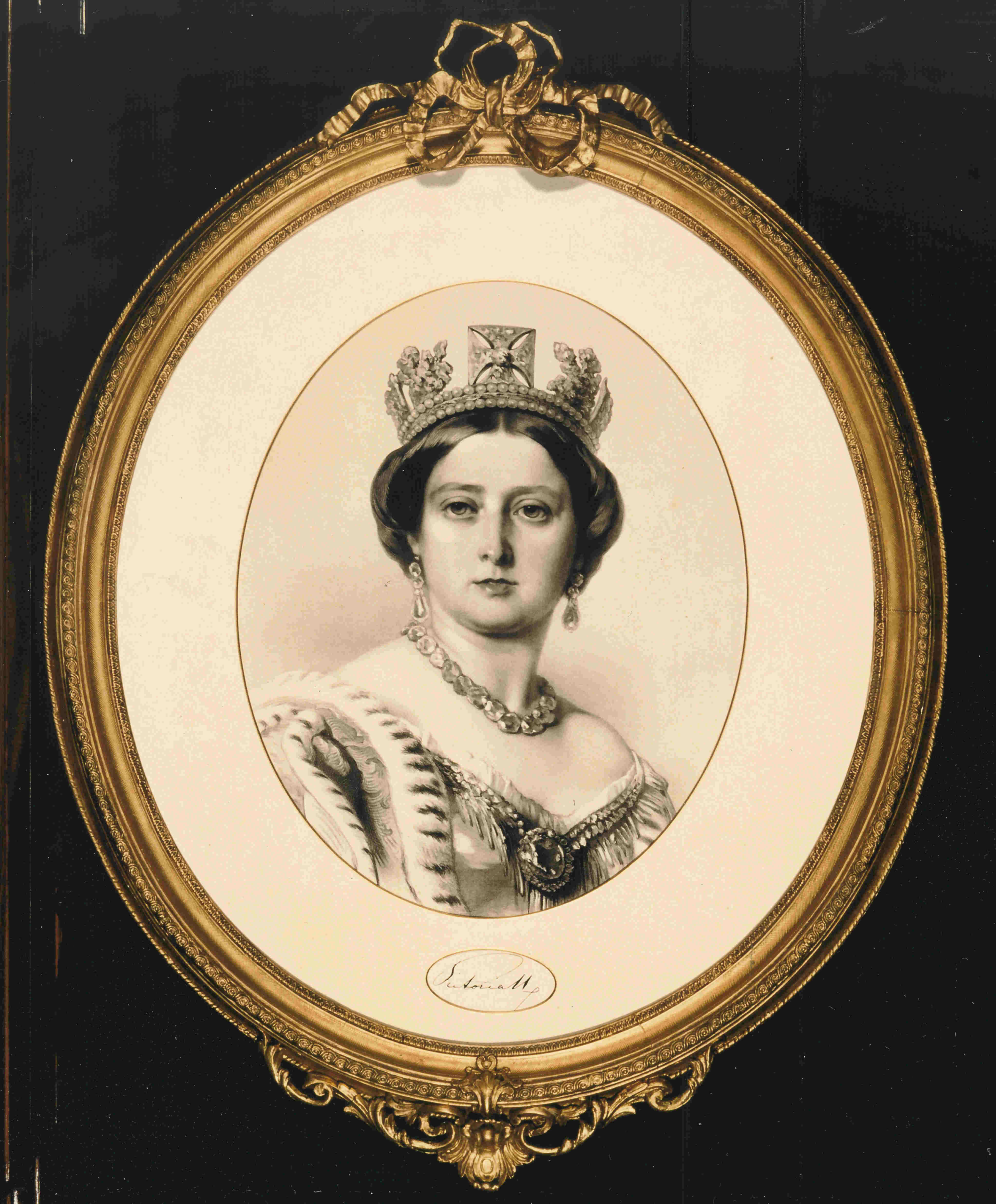
Queen Victoria, with some members of her family, arrived by train in Killarney on the evening of Monday 26 August 1861. The royal party spent that first evening as guests of the Browne family of Killarney House. The Herbert family hosted the following two nights at Muckross House. During the course of her visit the Queen visited many of Killarney’s beauty spots, including Derrycunnihy and Torc Waterfall. She also participated in a traditional Killarney Stag Hunt upon the Lakes.
Return To Timeline
Henry Arthur Herbert, the man responsible for the building of the present Muckross House, died in February 1866. He was buried in nearby Killegy graveyard overlooking the Muckross Estate.
Shortly after, his principal tenants erected a large Celtic cross in his memory. Overlooking the Muckross Estate, the cross was designed by the Cork architect William Atkins. A second Celtic cross was erected by Henry’s wife Mary close to the church on the nearby village green.
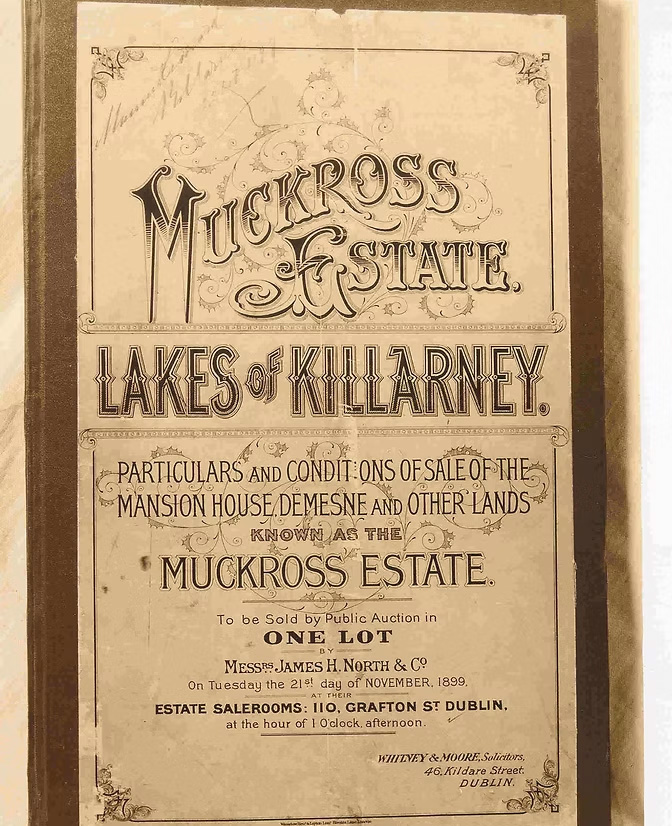
The visit of Queen Victoria to Muckross in 1861 marked the high point of the Herbert family fortunes. In the following decades the family experienced financial difficulties.
Finally, in 1898, the Standard Life Assurance Company of Scotland foreclosed on the Herbert mortgage and their association with Muckross came to an end. On 21 November 1899 Muckross House and its Estate was put up for auction in Dublin. However, it failed to reach the reserve price and was withdrawn. Shortly after, the property was purchased by Lord Arthur Edward Guinness, also known as Lord Ardilaun (1840-1915), for the sum of £60,000.
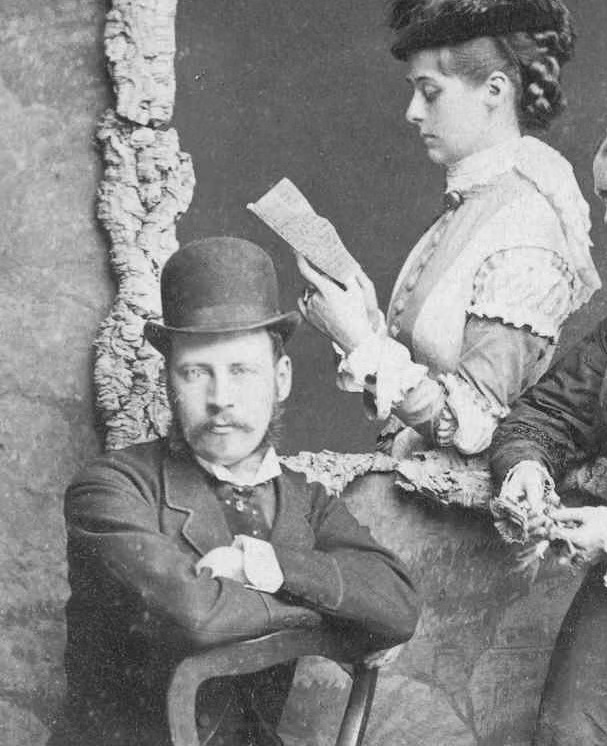
Lord Ardilaun, Arthur Edward Guinness (1840-1915), was a member of the famous brewing family. A staunch Tory, he was a successful businessman, philanthropist and MP. Ardilaun’s wife, Olivia, was a niece of Colonel Henry Arthur Herbert, the man responsible for building the present Muckross House. It is likely that this family connection was the reason that Ardilaun purchased the Muckross property in 1899.
However, the couple did not reside at Muckross. In 1911 Ardilaun sold the property to William Bowers Bourn, a wealthy American.
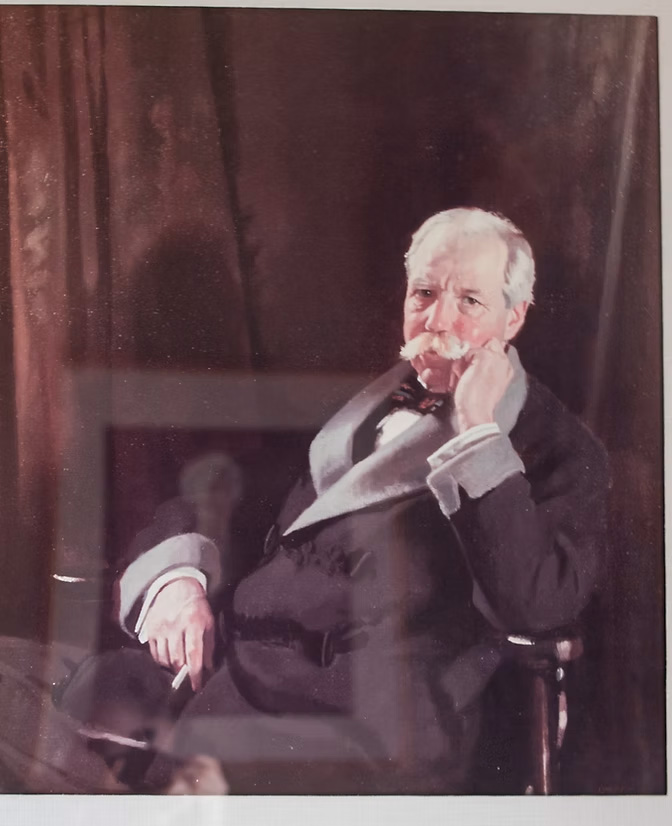
Maud Bourn (1883-1929) was the only surviving child of William and Agnes Bourn, a wealthy and influential couple from San Francisco.
The Bourn family travelled extensively. It was while they were on board ship for Europe in 1906 that Maud met her future husband Arthur Rose Vincent from Clonlara, Co. Clare. The couple were married in California in 1910 and Arthur then retired from the foreign Judicial Service.
William and Agnes purchased Muckross House and its Estate in 1911 as a wedding present for Maud and her husband. The couple had two children, Rosie (d. 1981) and Billy (d. 2012).

In January 1929 the Vincent family were at Cannes, in France, when Maud received a telegram informing her of her father’s deteriorating health. She immediately set out, with her two children, for her parents’ home, Filoli, in California.
Maud developed pneumonia on board ship and died in New York on 22 February 1929. She was buried in the hurriedly prepared Bourn family cemetery at Filoli.
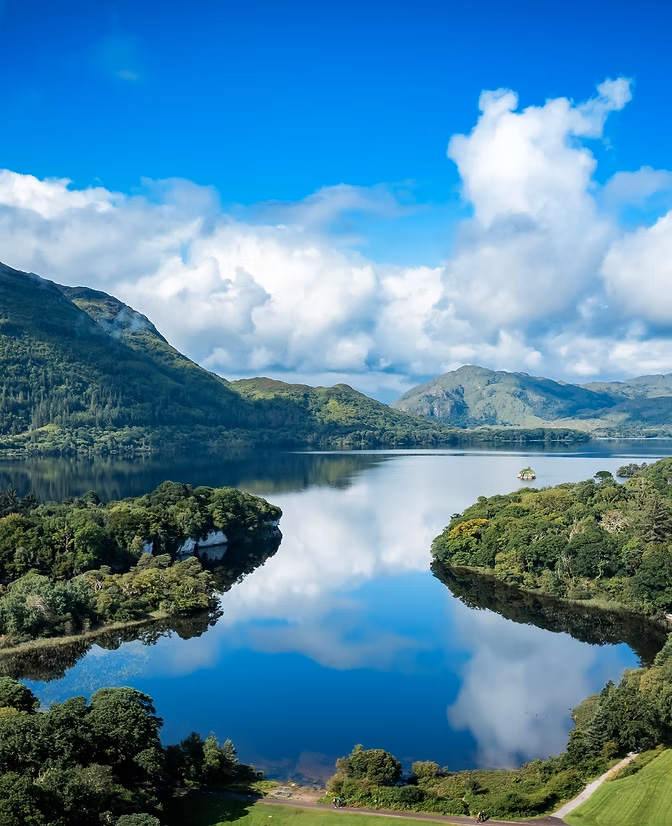
On 1 January 1933 the Muckross Estate became Ireland’s very first National Park. It was known as the Bourn Vincent Memorial Park in memory of the family who had gifted it to the Nation. The Park then covered an area of 4,300 hectares (over 10,000 acres). It formed the nucleus of the present Killarney National Park, which was greatly extended during the 1970s through donations and land purchases by the State.
Today Killarney National Park covers an area of c. 10,000 hectares (c. 24,710 acres) and includes a wide diversity of habitats including woodlands, lakes, mountains, grasslands and bogs.

Muckross House remained closed for over 30 years having been donated to the Irish people by the Bourn Vincent family in late 1932.
Over the years there were many suggestions as to how the House should be used. At a public meeting in December 1963 a local man, Dr Frank Hilliard, suggested that it should be opened as a folk museum. This idea was enthusiastically received. With the cooperation of the Minister for Finance, Dr Jim Ryan, Muckross House opened to the public for the first time on 14 June 1964.
Following the successful opening of Muckross House, in June 1964, the initial organising committee became a voluntary, charitable body, the Trustees of Muckross House.Over the succeeding decades the Trustees have, in close partnership with the State, continued to restore and care for Muckross House.They have also undertaken the development of Muckross Traditional Farms and the Walled Garden Centre, with its crafts centre, shop and Garden Restaurant. The Bourn Vincent Memorial Park has been extended over the years to form the present Killarney National Park. It now covers an area of over 10,000 hectares to the south and west of Killarney town. With its lakes, mountains and woodlands Killarney National Park contains a wide diversity of important habitats, as well as many historical sites.
Return To Timeline